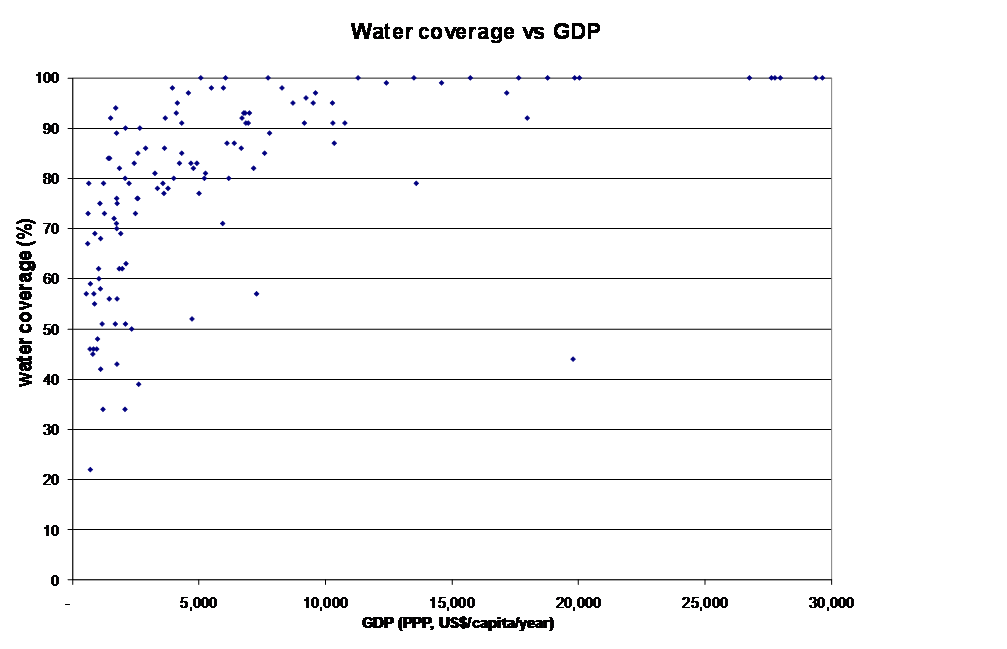The Netherlands is not the first country to spring to mind when the word drought is mentioned. But we are now in the midst of one, as according to meteorologists it has been the driest spring in decades.
Published on: 11/06/2011
Most people enjoy the nice sunny weather. But it starts to get worrying. Various consecutive evenings there have been items about it in the news, showing for example how farmers are forced to irrigate their crops additionally, and how water managers are trying to combat saline groundwater intrusion. Last week they showed how any shortages would be rationed. Productive sectors like agriculture and tourism will be the first ones to face rationing of water supplies. After that both the electricity sector (for cooling water) and the domestic water supply sectors will face rationing. The highest priority, finally, is given to the use of water in safety measures; for example, water levels cannot get too low as otherwise dikes may dry up, produce cracks and collapse altogether. Dikes breaking due to drought – it sounds counter-intuitive. But, should I get worried that the drought will last but my water supplies not?
The richer the county gets, the higher its coverage in water and sanitation.
To start with, first another counter-intuitive point: the relation between water availability and access to water. Intuitively, one would say that in water scarce areas, accessing drinking water would be problematic. Or, that in areas with abundant water, it is no problem to get water. But, there is no relation whatsoever between water resources availability (expressed in km3/person available) and access to drinking water supplies. In countries with very low water resources availability, like the Arabian peninsula, access to improved water supplies is nearly universal. The DR Congo has one of the highest levels of water abundance in the World, but only a small percentage of the population has access to services. I came across the graph below which I made a few years ago plotting coverage in improved water supply against water resources availability. As can be seen, there is no apparent correlation between the two.

The explanation lies in the fact that in order to get drinking water supplies you need of course water, but above all infrastructure to get it to your home, which in turns requires money and institutions to manage the infrastructure. The graph below plots the relation between GDP per capita and coverage of water supply, and....

The correlation becomes a bit clearer. The richer the county gets, the higher its coverage in water and sanitation. And there is a bending point somewhere around the GDP of 5000 US$/capita per year where the vast majority of people would have access to water.
Does this then mean that water resources have no influence at all on water supplies? Don’t we hear stories of drinking water wells drying up in times of drought? Or worse, of future supplies dwindling due to melting glaciers in the Himalayas and the Andes? The answer is therefore a yes, but it needs to be qualified. First of all this happens in areas where there is physical scarcity, i.e. areas where the demand for water is starting to outstrip supplies. Various parts of India provide the “classical” example of that, where demand for irrigation and cities is so high that domestic wells dry up. This is then compounded by inadequate governance arrangements to ensure that domestic water gets the priority in allocation. A second situation in which this occurs is where there is what is called economic scarcity, or situations where water resources are available but not the financial or institutional capacity to harness that water. Many parts of Africa are characterised like that. You would have situation of domestic wells drying up in the dry period. Beyond the few wells that exist, there may be more water available, but the infrastructure is simply not there. Likewise, very little storage capacity is available in Africa, compared to other continents. So water cannot be stored for occasional droughts.
Back to the Netherlands. Should I get worried that the taps at home will run dry if the drought continues? Let’s check. The Netherlands has an adequate average water resources availability of 11 km3/year/person. But not now – that is why we are in a drought. The Dutch GDP is high enough and it has a highly rated water infrastructure. I don’t have the figures at hand, but storage for dry periods seems to be there as well. So, all preconditions should be there to deal adequately with a drought. But just to be sure, I’d be glad if it rained a bit more, and then preferably in some upstream country, so we can still have sunny beach days and an assured water supply coming from our neighbours.
At IRC we have strong opinions and we value honest and frank discussion, so you won't be surprised to hear that not all the opinions on this site represent our official policy.